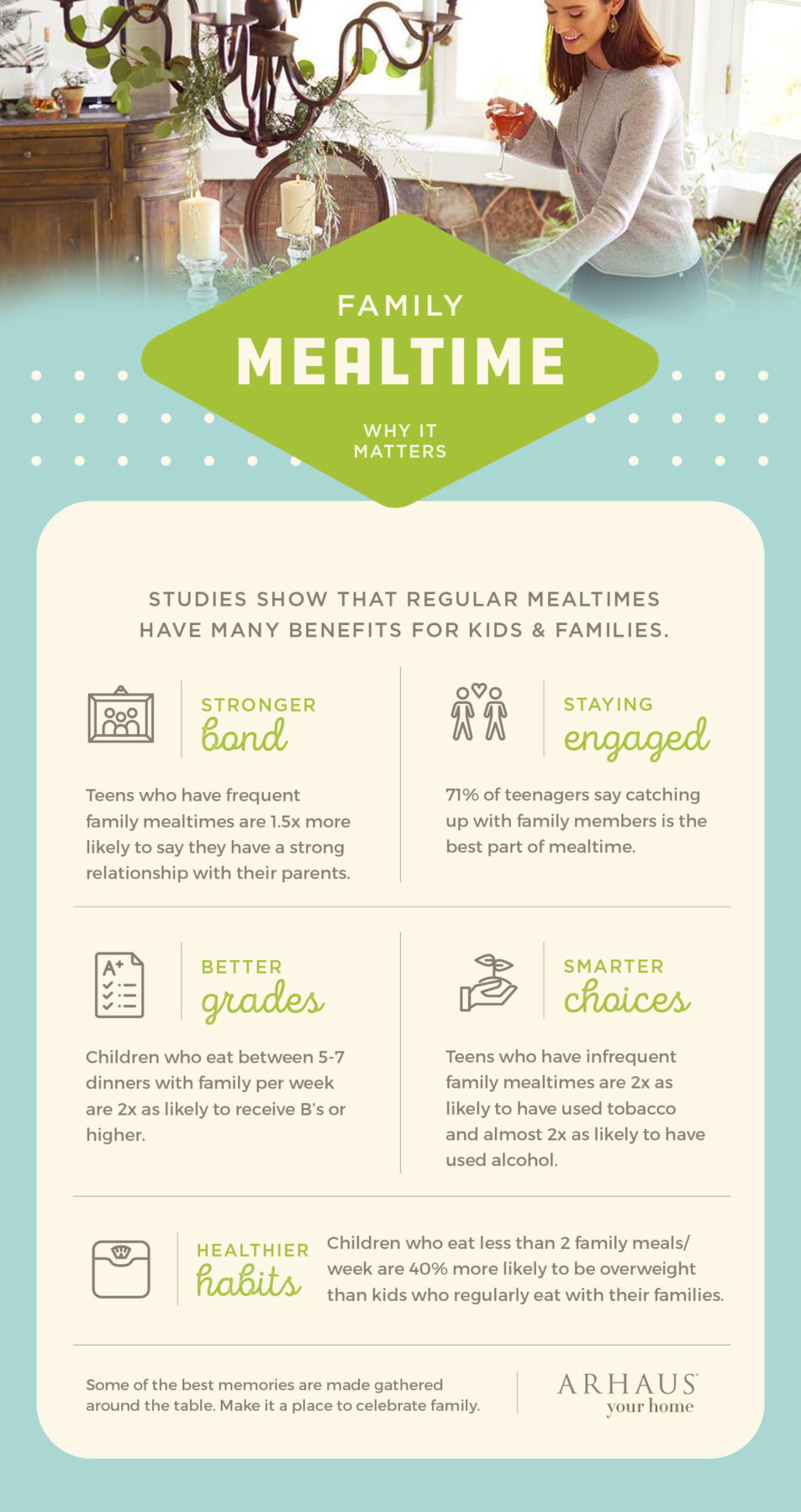[vc_row][vc_column][vc_column_text]There are endless benefits to sitting down at the table as a family and enjoying a meal together. However, feeding children can often feel dizzying and frustrating for parents. Kids’ likes and dislikes change daily. Some days they eat everything on their plate. Some days they won’t eat more than a bite or two. Watching them make poor choices or refusing to eat can cause stress for parents and children, souring the family mealtime experience for everyone. Here are some tips for a stress-free family mealtime.
Creating a Stress-Free Environment
Sometimes it seems easier to just let them eat “kid food” earlier and have “adult dinner” later. If eating the same food at the same time feels like a battle, consider this – as the parent, you can’t actually make them eat much of anything. And it isn’t your job to make them eat. What you can do is create an environment in which your kids feel comfortable to try new foods and eat the amount their bodies need. With some minor shifts in your approach and focus at mealtime, you can create an environment in which everyone is happy, healthy and satisfied – thus providing a stress-free family mealtime.
And beyond the immediate satisfaction of gathering your loved ones around the table, family mealtime has many important social and health benefits for kids.We’ve spoken about some of those benefits before, and the family-owned furniture retailer Arhaus has created the guide below to further explore some of the perks of family meals:

Sounds great, right? Here are four ways to get the whole crew on board for a stress-free family mealtime.
- Give everyone a job.
Almost every child can have a role in the mealtime. Someone can set out plates and silverware, someone can set napkins (a great job for young children), and everyone can wash their hands and sit down at the dinner table. Giving children a sense of responsibility about the meal leads to greater mealtime acceptance, and it helps parents get meals on the table. - Serve food family-style.
Letting kids serve themselves is one of the best ways to encourage children to try different foods. Some children might not be great at scooping or using tongs, so a little help might be warranted. But, ultimately letting them decide if and how much of a food goes on their plate will go a long way towards acceptance (plus a much less dramatic family mealtime). - Let kids eat as much as they want (or don’t want).
It is perfectly reasonable to ask kids to try a bite before they decide they don’t like it. Forcing kids to try a bite before they can leave the table is counterproductive. Kids who are resistant to trying new foods are more likely to reject them when they feel forced. Kids also have an impeccable sense of hunger and fullness. It’s normal for their hunger to fluctuate dramatically, so trust your kids to know when they are full. Allowing kids to serve themselves also leads to less food waste. - Take the focus off food and onto family.
When parents accept that it’s not their job to “make” their kids eat, it can open up so many opportunities for quality family time during meals. Ask kids their favorite part of the day. Is there anything they wished they did differently? What are they looking forward to about tomorrow?
Be patient with your kids (and yourself!) and family mealtime will become a high point of everyone’s day.[/vc_column_text][/vc_column][/vc_row]

